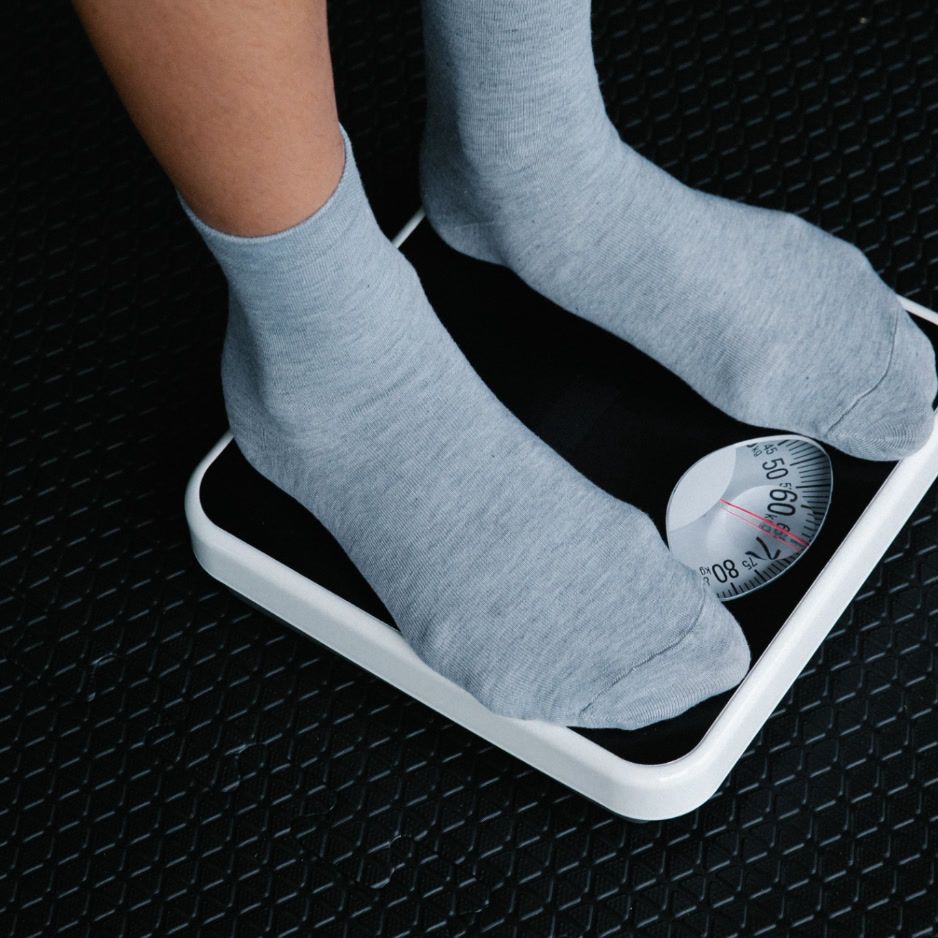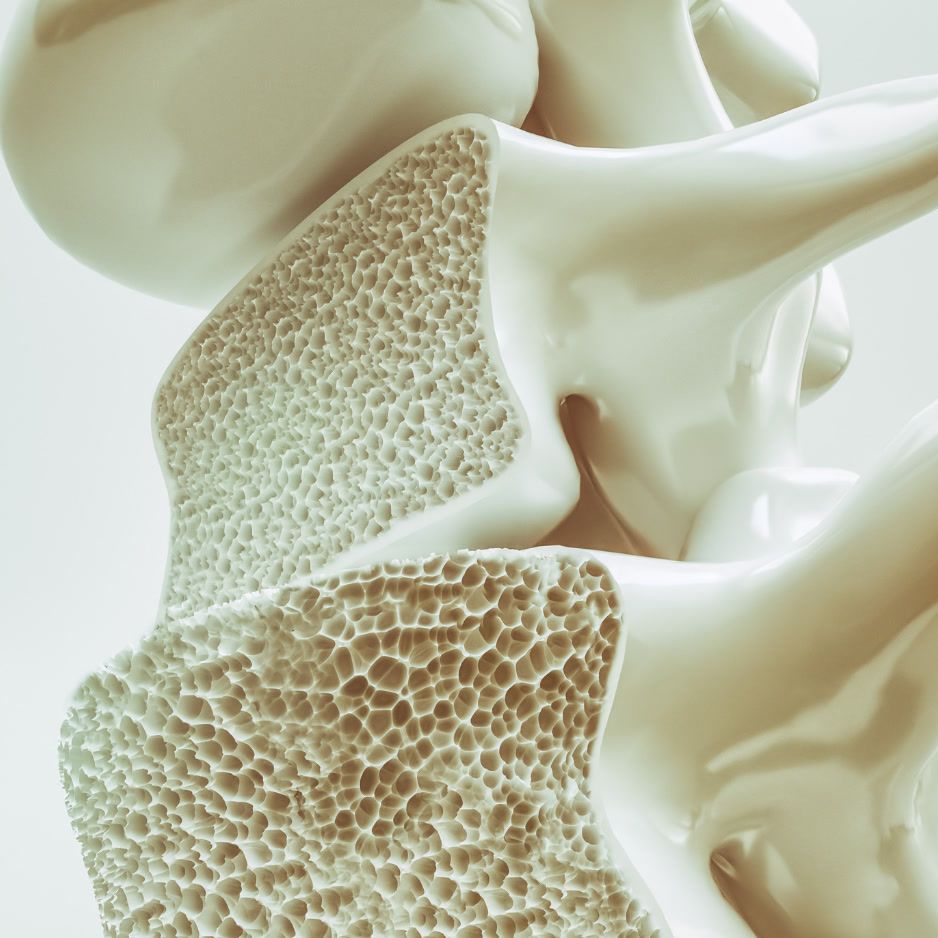Central Obesity: Definition, Measurement, and Health Risks
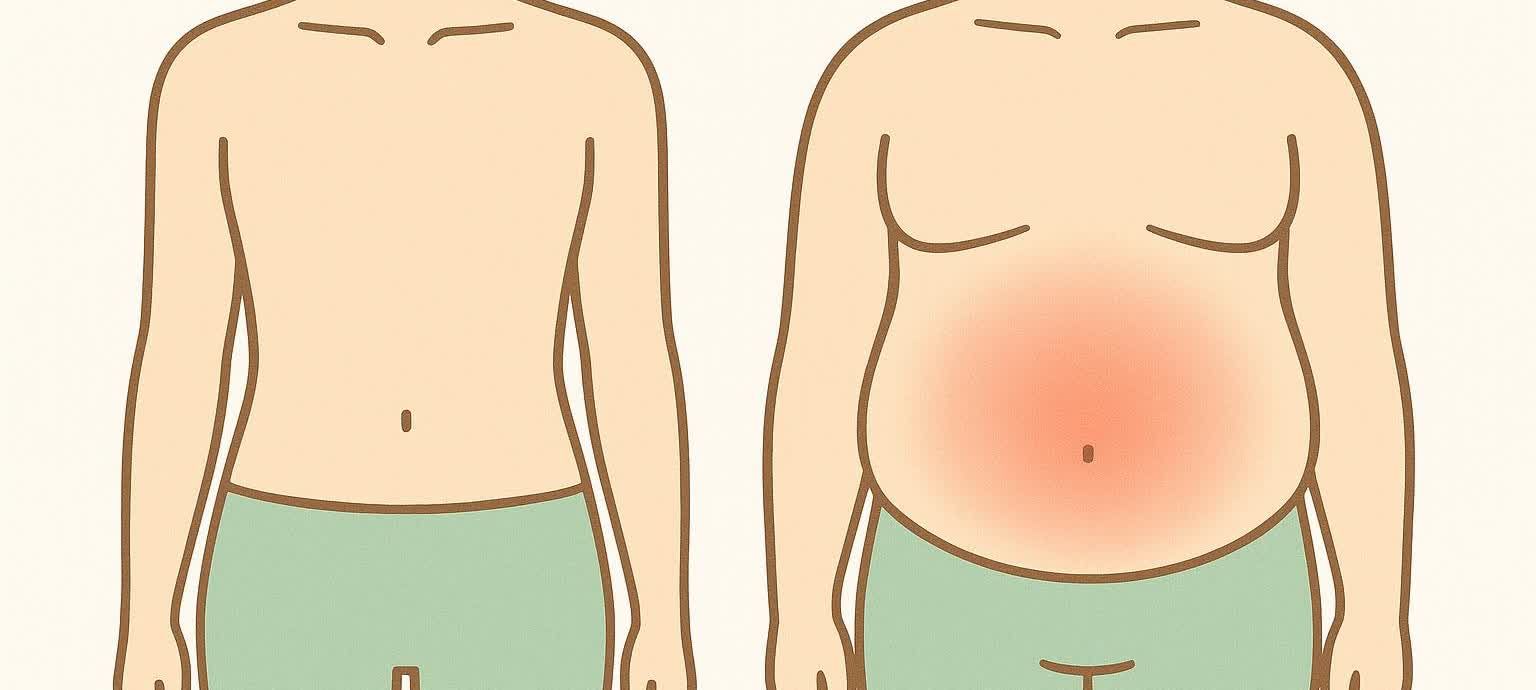
Central Obesity: Definition, Measurement, Health Risks, and Management
Central obesity—a concentration of visceral fat around your abdominal organs—exerts a stronger influence on metabolic and cardiovascular health than total body weight alone. This guide explains how to recognize, quantify, and reduce central obesity using evidence-based methods and BodySpec’s high-resolution DEXA data.
Quick-Glance Takeaways
| Why it matters | How to spot it | What to do next |
|---|---|---|
| Central obesity (excess visceral fat around the organs) significantly increases risk for heart disease, type 2 diabetes, fatty liver, dementia, and more. | Tape-measure checks—waist circumference, waist-to-hip ratio (WHR), and waist-to-height ratio (WHtR)—flag risk faster than BMI alone. | Combine lifestyle upgrades with precision tracking via a BodySpec DEXA scan. |
1. What Exactly Is Central Obesity?
Central obesity—also called abdominal, truncal, or android obesity—refers to excess visceral fat packed deep inside the abdominal cavity. Visceral fat surrounds the liver, pancreas, and intestines and behaves like an endocrine organ, secreting inflammatory cytokines such as IL-6 and TNF-α (Tchernof & Després, 2013, Physiological Reviews).
Key distinctions:
- Visceral vs. subcutaneous fat – Subcutaneous fat is the soft layer you can pinch; visceral fat sits behind the abdominal wall and is metabolically more dangerous (Cleveland Clinic).
- Normal-Weight Central Obesity (NWCO) – BMI can appear “normal” while visceral fat remains high (Bosomworth, 2019, Canadian Family Physician).
Apple vs. Pear: The Body-Shape Analogy
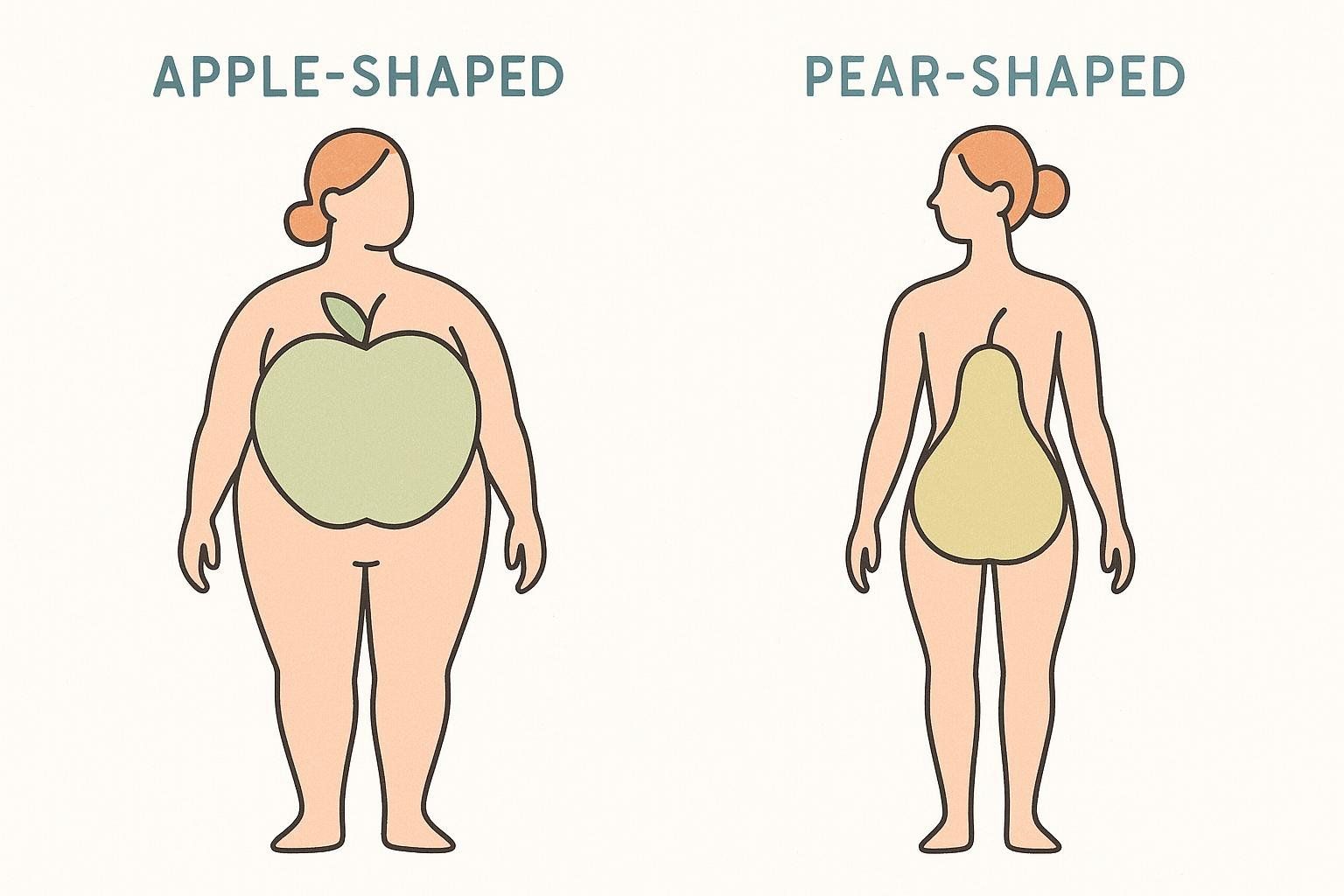
People who store fat centrally (“apple-shaped”) carry higher cardiometabolic risk than those who store fat around hips and thighs (“pear-shaped”). Visual cues alone are unreliable—quantitative measurements are essential.
2. Prevalence & Key Risk Factors
A 2020 systematic review of 13.2 million adults from 288 studies reported a global central-obesity prevalence of 41.5 % (Wong et al., 2020, European Journal of Epidemiology).
Key risk factors:
- Diets high in refined carbohydrates and saturated fat
- Physical inactivity (more than 8 hours/day of sedentary time)
- Chronic stress and elevated cortisol
- Habitual sleep of less than 6 hours/night
- Hormonal shifts (e.g., menopause, low testosterone)
- Long-term glucocorticoid therapy

These drivers are highlighted by major health bodies and comprehensive reviews (National Heart, Lung, and Blood Institute (NHLBI); Tchernof & Després, 2013; Chaput et al., 2022, Nature Reviews Endocrinology).
Ethnic insights: Asian populations accumulate visceral fat at lower BMIs and waistlines than Europeans, while some African groups may carry relatively less visceral fat at a given circumference (WHO 2008 report).
3. How to Measure Central Obesity
A. Waist Circumference (WC)
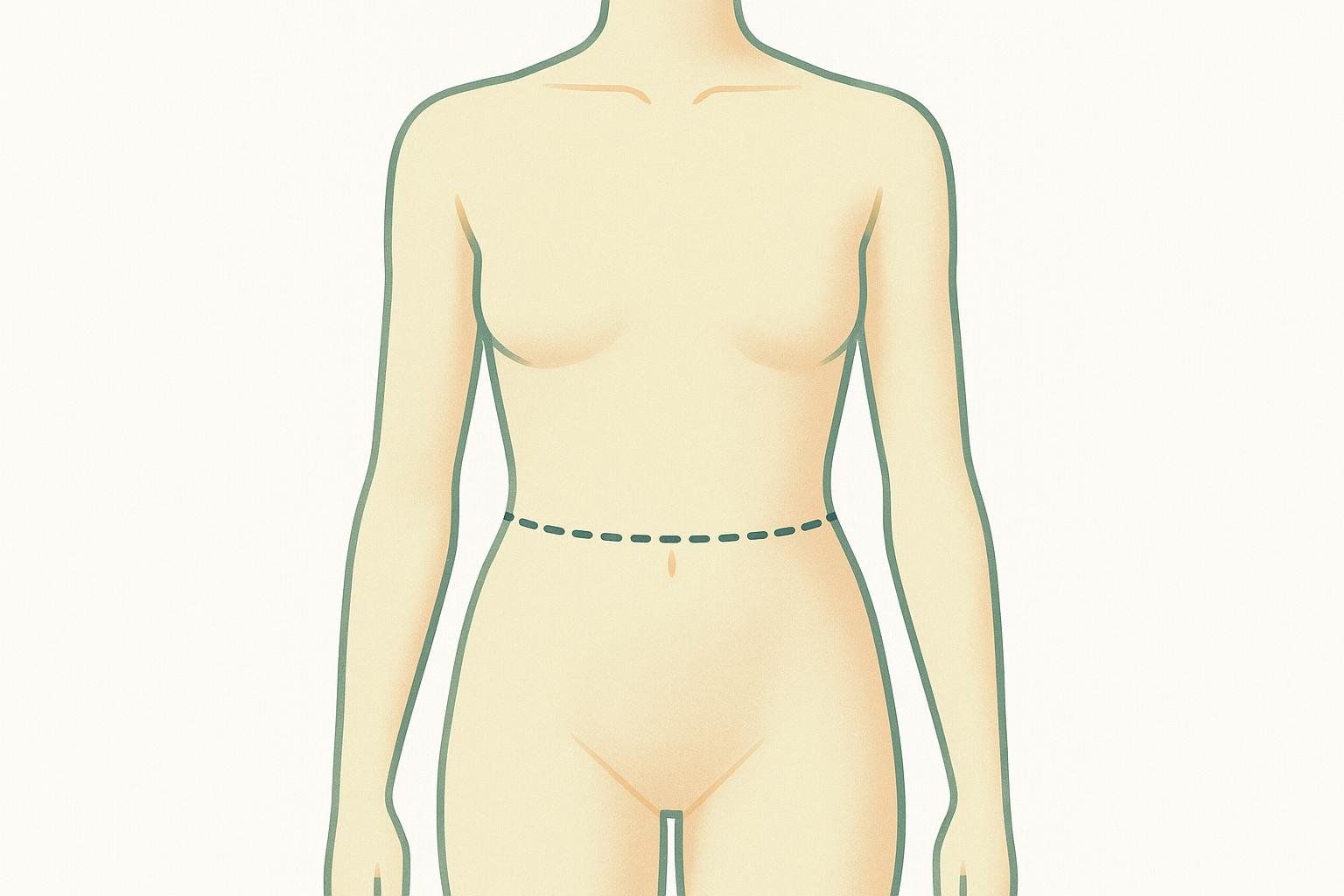
- Stand upright, feet hip-width apart, abdomen relaxed.
- Place a flexible, non-stretch tape midway between the lowest rib and top of the iliac crest.
- Exhale normally and record to the nearest 0.1 cm.
- Repeat once and average.
| Population | Increased-Risk Cut-off | High-Risk / Diagnostic Cut-off* |
|---|---|---|
| Men (EU/US) | ≥ 94 cm (37 in) | ≥ 102 cm (40 in) |
| Women (EU/US) | ≥ 80 cm (31.5 in) | ≥ 88 cm (35 in) |
| Men (Asian) | ≥ 90 cm (35.5 in) | ≥ 90 cm (35.5 in) |
| Women (Asian) | ≥ 80 cm (31.5 in) | ≥ 80 cm (31.5 in) |
*Many Asian populations use a single threshold to denote risk (WHO 2008 report; International Diabetes Federation (IDF) criteria).
B. Waist-to-Hip Ratio (WHR)
Formula = waist ÷ hip circumference.
Risk thresholds: > 0.90 (men); > 0.85 (women) (WHO 2008 report).
C. Waist-to-Height Ratio (WHtR)
Formula = waist ÷ height.
Guideline: keep WHtR below 0.5 for both sexes—values above signal elevated cardiometabolic risk (Harvard T.H. Chan School of Public Health).
D. Gold-Standard Imaging: DEXA
Tape measures estimate risk—DEXA pinpoints it. A DEXA scan directly measures visceral-adipose tissue (VAT).
- Accuracy: modern whole-body DEXA systems agree with scale weight within ± 1 % and deliver similarly low error for total fat and lean mass (Shepherd et al., 2017).
- Precision for VAT shows day-to-day coefficients of variation in the 4 – 7 % range, improving as BMI rises (Goldberg et al., 2019).
- Validation studies comparing DEXA to CT/MRI find tight correlations for VAT volume (e.g., r ≥ 0.90) (Kaul et al., 2012).
Book a 10-minute BodySpec DEXA appointment to see your exact visceral-fat mass and age- and sex-matched percentile.
E. BMI vs. Visceral Fat: BodySpec’s Internal Findings
Our analysis of 10,000 + BodySpec scans shows that BMI alone captures only about one-third of the differences we see in visceral-fat levels. In some groups—such as Asian women—it captures barely one-fifth. Translation: two people with the same BMI can have very different amounts of harmful belly fat.
4. Why Central Obesity Is So Dangerous
| Mechanism | Downstream Health Issues |
|---|---|
| Chronic low-grade inflammation (↑ IL-6, TNF-α) | Atherosclerosis, joint inflammation |
| Ectopic fat spill-over to liver & pancreas | NAFLD, insulin resistance, type 2 diabetes |
| Hormonal disruption (↓ adiponectin, ↑ resistin) | Poor glucose tolerance, dyslipidemia |
| Mechanical load & diaphragm elevation | Obstructive sleep apnea, asthma (Isono, 2012) |
| Amyloid & vascular changes | Dementia, Alzheimer’s disease |
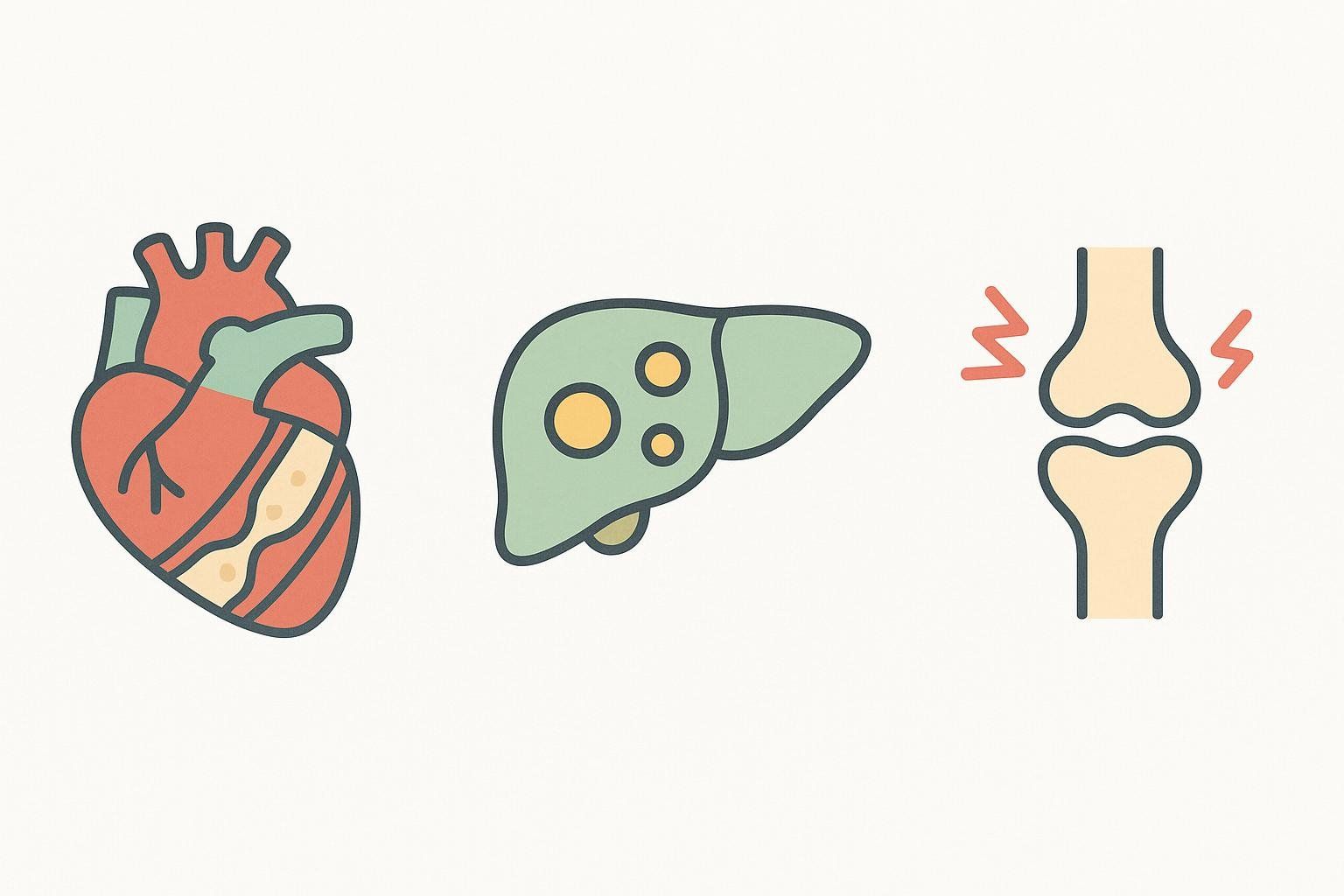
Individuals with NWCO have up to 2.5-fold higher cardiovascular mortality than peers with normal waistlines at the same BMI (Coutinho et al., 2015).
5. Evidence-Based Strategies to Reduce Central Obesity
For a deeper dive into day-to-day tactics, check out our comprehensive guide on how to lose visceral fat.
Lifestyle First
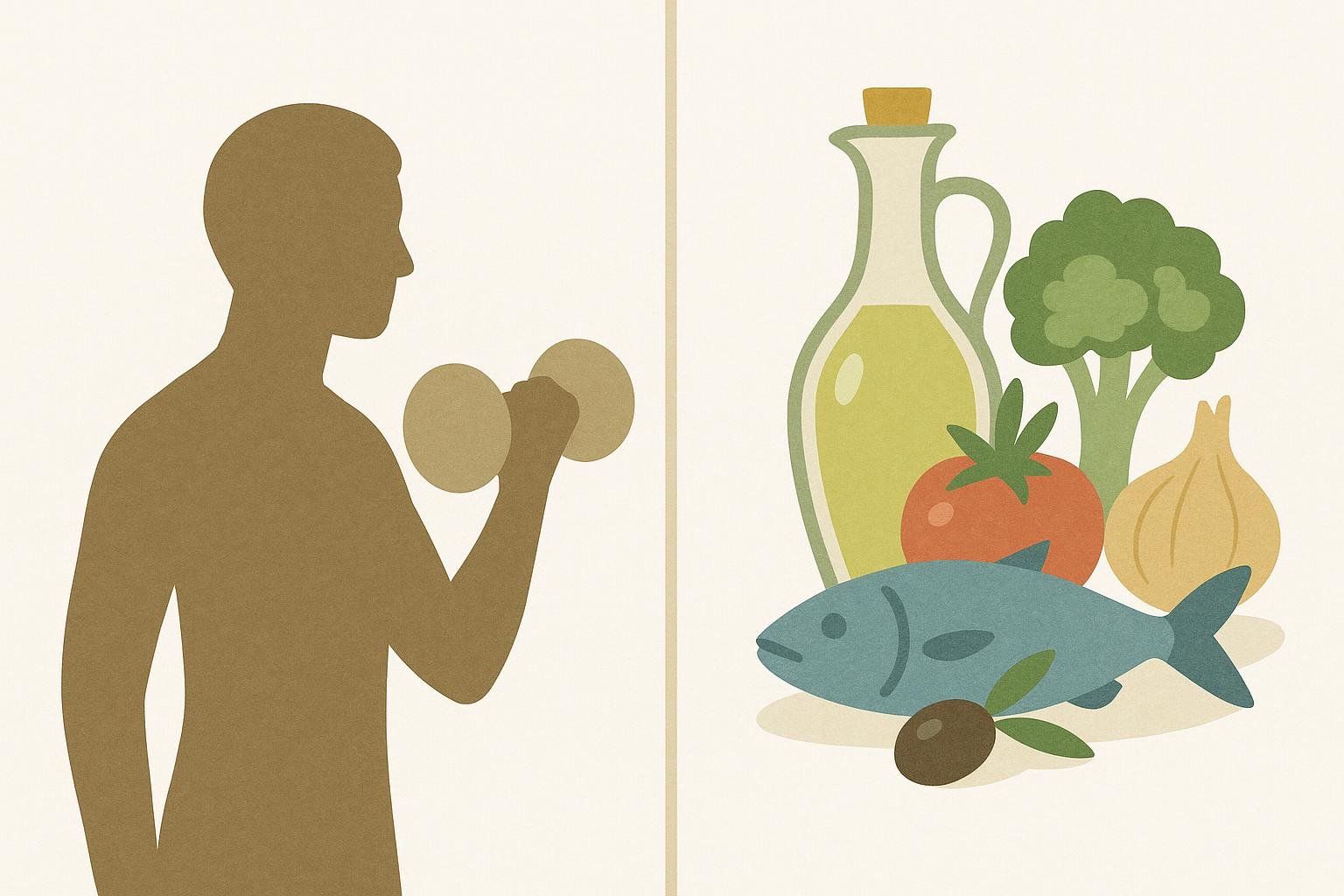
- Strength + HIIT Combination
- 3 sessions/week of full-body resistance training
- 2 – 3 HIIT bouts (15 – 20 min) specifically target visceral fat (Cleveland Clinic)
- Protein-Centric Mediterranean Diet
- Emphasize legumes, fish, extra-virgin olive oil, and colorful produce
- Track macros with our Ultimate Macro Guide
- Stress & Sleep Hygiene
- A 12-week yoga program reduced waist circumference by 3 cm in centrally obese women (Cramer et al., 2016).
- Alcohol Intake: Keep It Moderate
- U.S. guidelines define moderation as up to 2 drinks/day for men and 1 drink/day for women.
- In the Copenhagen City Heart Study, men consuming more than 21 beers per week and women consuming more than 14 beers per week had significantly higher odds of large waistlines 10 years later (Vadstrup et al., 2003). These study-specific thresholds illustrate how heavy drinking—well beyond U.S. moderation recommendations—can exacerbate central fat gain.
Clinical & Adjunct Options
| Option | When to Consider | Pros | Cons |
|---|---|---|---|
| Medical nutrition therapy | BMI ≥ 25 plus comorbidities | Structured, often insurance-covered | Requires RD support |
| Metformin or GLP-1 agonists | Diabetes or pre-diabetes | Lower visceral fat, improve glycemic control | Prescription only, side effects |
| Bariatric surgery | BMI ≥ 35 or ≥ 30 with severe disease | Largest sustained visceral-fat reduction | Invasive, costly |
(Discuss medication or surgical options with a qualified clinician.)
Key Take-Home Message
Central obesity is an early warning sign of metabolic strain. Follow the cycle:
- Measure accurately via DEXA scan (If DEXA unavailable, try tape, BMI–visceral-fat comparison).
- Implement targeted lifestyle or clinical interventions.
- Re-measure and adjust to sustain progress.
Ready to turn data into action? Schedule your BodySpec DEXA scan and take control of your visceral-fat risk today.

